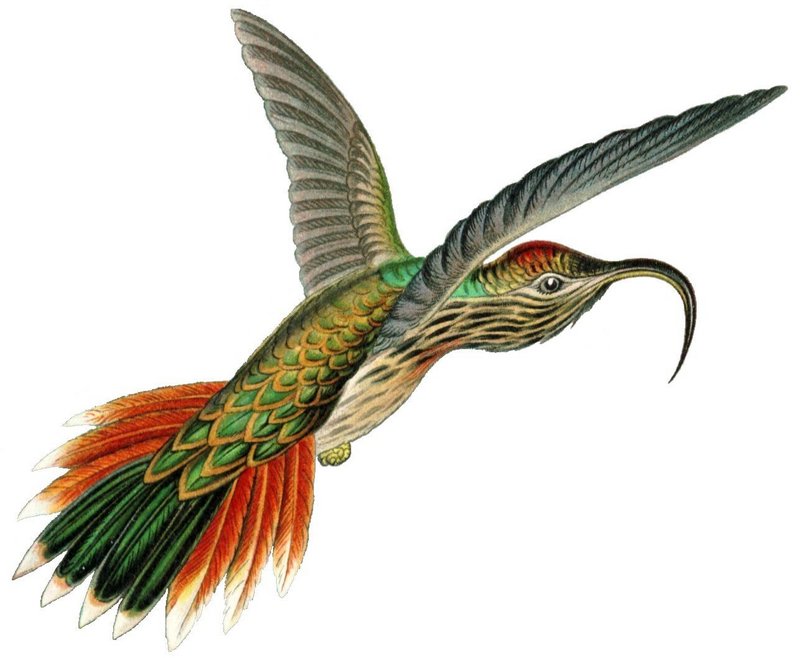Buff-tailed Sicklebill Hummingbird (Eutoxeres condamini) - Wiki Buff-tailed Sicklebill
From Wikipedia, the free encyclopedia
[Photo] Buff-tailed Sicklebill Hummingbird (Eutoxeres condamini) illustration cropped from the 99th plate illustration from Ernst Haeckel's Kunstformen der Natur (1904).
The Buff-tailed Sicklebill (Eutoxeres condamini) is a species of hermit hummingbird from the east Andean slopes (up to 3300 m/10800 ft) and adjacent west Amazonian lowlands in Colombia, Ecuador, Peru and Bolivia. It is restricted to the undergrowth of humid forested and wooded habitats. It is inconspicious and easily overlooked, but generally fairly common and therefore considered to be of Least Concern by BirdLife International.
With a total length of 14 cm (5½ in), it is a relatively large hummingbird. Its upperparts are iridescent dull greenish, while the underparts are whitish, densely streaked with dusky. The neck-side has a relatively faint blue patch. The most conspicious feature, however, is its strongly decurved bill, which the common name - sicklebill - refers to. The outer rectrices are deep buff (best visible from below), and this is useful for separating it from the only other member of the genus Eutoxeres, the White-tipped Sicklebill (E. aequila). Males and females are virtually identical, differing only in wing-measurements.
The peculiar bill is an adaption to the shape of certain flowers of the genera Heliconia and Centropogon. It feeds mainly by trap-lining. In addition to nectar, it will also catch small arthropods. The two eggs are laid in a nest which is attached to the underside of a leaf. Only the female incubates.
http://en.wikipedia.org/wiki/Buff-tailed_Sicklebill
| The text in this page is based on the copyrighted Wikipedia article shown in above URL. It is used under the GNU Free Documentation License. You may redistribute it, verbatim or modified, providing that you comply with the terms of the GFDL. |
